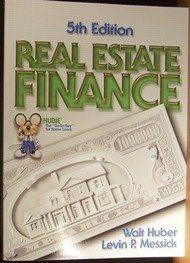Question
Suppose a trader who owns 320,000 pounds of commodity A decides to hedge the value of her position with the futures contracts. One futures contract
Suppose a trader who owns 320,000 pounds of commodity A decides to hedge the value of her position with the futures contracts. One futures contract is for the delivery of 40,000 pounds of commodity B. The price of commodity A is $21.20 and the futures price is 18.30 (both dollars per pound). The correlation between the futures price and the price of commodity A is 0.92. The volatilities of commodity A and the futures are 0.31 and 0.38 per year, respectively. What is the optimal number of futures contracts with no tailing of the hedge?
| A. | 7 | |
| B. | 6 | |
| C. | 8 | |
| D. | 9 |
Suppose a trader who owns 320,000 pounds of commodity A decides to hedge the value of her position with the futures contracts. One futures contract is for the delivery of 40,000 pounds of commodity B. The price of commodity A is $21.20 and the futures price is 18.30 (both dollars per pound). The correlation between the futures price and the price of commodity A is 0.92. The volatilities of commodity A and the futures are 0.31 and 0.38 per year, respectively. What is the optimal number of futures contracts with tailing of the hedge?
| A. | 9 | |
| B. | 8 | |
| C. | 7 | |
| D. | 10 |
A fund manager of a $72 million equity portfolio with a beta of 0.9 considers changing the portfolios risk level using S&P 500 index futures. The S&P 500 index futures with the multiplier of 250 are trading at 3,359. What is the number of futures contracts necessary to increase beta to 1.25?
| A. | 107 | |
| B. | 77 | |
| C. | 17 | |
| D. | 30 |
A fund manager of a $72 million equity portfolio with a beta of 0.9 considers changing the portfolios risk level using S&P 500 index futures. The S&P 500 index futures with the multiplier of 250 are trading at 3,359. Should the fund manager take a long or short futures position to increase beta to 1.25?
| A. | Short | |
| B. | Long |
A fund manager of a $72 million equity portfolio with a beta of 0.9 considers changing the portfolios risk level using S&P 500 index futures. The S&P 500 index futures with the multiplier of 250 are trading at 3,359. What is the number of futures contracts necessary to completely hedge the portfolios market risk?
| A. | 77 | |
| B. | 107 | |
| C. | 30 | |
| D. | 17 |
A fund manager of a $72 million equity portfolio with a beta of 0.9 considers changing the portfolios risk level using S&P 500 index futures. The S&P 500 index futures with the multiplier of 250 are trading at 3,359. Should the fund manager take a long or short futures position to completely hedge the portfolios market risk?
| A. | Short | |
| B. | Long |
A fund manager of a $72 million equity portfolio with a beta of 0.9 considers changing the portfolios risk level using S&P 500 index futures. The S&P 500 index futures with the multiplier of 250 are trading at 3,359. Suppose that at the maturity of the futures contract, the future contract is trading at 3,305 and the portfolio has experienced a 1% decline in value. What is the net impact of the market decline on the completely hedged portfolio? In other words, what is the change in the value of the completely hedged portfolio?
| A. | -$706,500 | |
| B. | $319,500 | |
| C. | -$315,000 | |
| D. | -$720,000 |
Step by Step Solution
There are 3 Steps involved in it
Step: 1

Get Instant Access to Expert-Tailored Solutions
See step-by-step solutions with expert insights and AI powered tools for academic success
Step: 2

Step: 3

Ace Your Homework with AI
Get the answers you need in no time with our AI-driven, step-by-step assistance
Get Started


